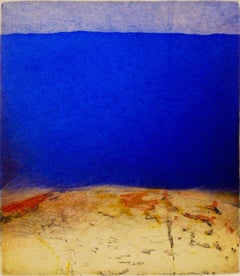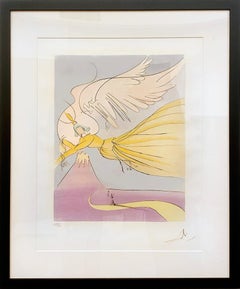Art by Medium: Drypoint
21st Century and Contemporary Abstract Art by Medium: Drypoint
Drypoint, Aquatint
1880s Art by Medium: Drypoint
Etching, Drypoint
20th Century Modern Art by Medium: Drypoint
Drypoint, Aquatint
1970s Surrealist Art by Medium: Drypoint
Drypoint, Color
20th Century Modern Art by Medium: Drypoint
Drypoint, Aquatint
1920s Modern Art by Medium: Drypoint
Drypoint, Etching
20th Century Modern Art by Medium: Drypoint
Drypoint, Aquatint
1970s Surrealist Art by Medium: Drypoint
Drypoint, Color
1970s Surrealist Art by Medium: Drypoint
Drypoint, Engraving, Color
20th Century Modern Art by Medium: Drypoint
Drypoint, Aquatint
1940s Victorian Art by Medium: Drypoint
Ink, Etching, Drypoint, Paper
1970s Surrealist Art by Medium: Drypoint
Drypoint
20th Century Modern Art by Medium: Drypoint
Drypoint, Aquatint
20th Century Modern Art by Medium: Drypoint
Drypoint, Aquatint
20th Century Modern Art by Medium: Drypoint
Drypoint, Aquatint
20th Century Modern Art by Medium: Drypoint
Drypoint, Aquatint
20th Century Modern Art by Medium: Drypoint
Drypoint, Aquatint
1960s Surrealist Art by Medium: Drypoint
Engraving, Drypoint
1970s Surrealist Art by Medium: Drypoint
Drypoint, Color Pencil
1970s Contemporary Art by Medium: Drypoint
Drypoint
1960s Surrealist Art by Medium: Drypoint
Drypoint
Mid-19th Century French School Art by Medium: Drypoint
Laid Paper, Etching, Drypoint, Engraving
20th Century Surrealist Art by Medium: Drypoint
Lithograph, Drypoint
1980s Contemporary Art by Medium: Drypoint
Drypoint
Early 2000s Feminist Art by Medium: Drypoint
Drypoint
1970s Surrealist Art by Medium: Drypoint
Drypoint
1850s Surrealist Art by Medium: Drypoint
Drypoint
2010s Art by Medium: Drypoint
Mixed Media, Watercolor, Digital, Drypoint
1810s Romantic Art by Medium: Drypoint
Drypoint, Vellum, Etching, Aquatint
1960s Surrealist Art by Medium: Drypoint
Drypoint, Engraving
21st Century and Contemporary Abstract Art by Medium: Drypoint
Drypoint, Aquatint
1960s Surrealist Art by Medium: Drypoint
Watercolor, Etching, Drypoint, Paper
20th Century Surrealist Art by Medium: Drypoint
Lithograph, Drypoint
Early 2000s Contemporary Art by Medium: Drypoint
Drypoint, Etching
1960s Surrealist Art by Medium: Drypoint
Watercolor, Drypoint
1970s Surrealist Art by Medium: Drypoint
Drypoint, Etching
1960s Cubist Art by Medium: Drypoint
Aquatint, Drypoint, Etching
1970s Surrealist Art by Medium: Drypoint
Engraving, Drypoint
1810s Romantic Art by Medium: Drypoint
Aquatint, Drypoint, Vellum, Etching
1970s Surrealist Art by Medium: Drypoint
Paper, Drypoint, Etching
1970s Surrealist Art by Medium: Drypoint
Drypoint, Paper, Aquatint
1970s Surrealist Art by Medium: Drypoint
Drypoint, Color Pencil
1940s Art by Medium: Drypoint
Drypoint, Aquatint
1960s Surrealist Art by Medium: Drypoint
Drypoint
2010s Art by Medium: Drypoint
Mixed Media, Watercolor, Drypoint, Ink
1920s American Modern Art by Medium: Drypoint
Drypoint
Late 20th Century Surrealist Art by Medium: Drypoint
Drypoint, Paper
2010s Art by Medium: Drypoint
Paper, Watercolor, Drypoint
1970s Surrealist Art by Medium: Drypoint
Drypoint, Paper, Aquatint
2010s Art by Medium: Drypoint
Paper, Drypoint
2010s Art by Medium: Drypoint
Paper, Drypoint
2010s Art by Medium: Drypoint
Paper, Drypoint
2010s Art by Medium: Drypoint
Paper, Drypoint
1970s Surrealist Art by Medium: Drypoint
Drypoint, Paper, Aquatint
Early 20th Century Post-Impressionist Art by Medium: Drypoint
Drypoint
1970s Surrealist Art by Medium: Drypoint
Drypoint, Paper, Aquatint
1970s Surrealist Art by Medium: Drypoint
Drypoint, Paper, Aquatint
1970s Surrealist Art by Medium: Drypoint
Drypoint, Paper, Aquatint





